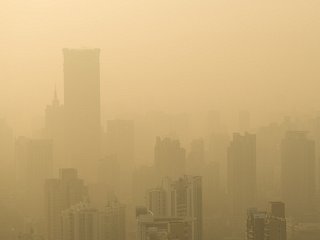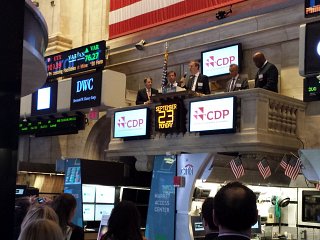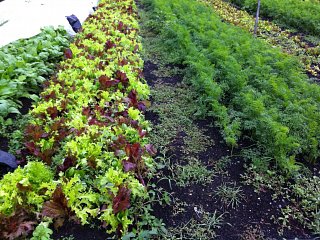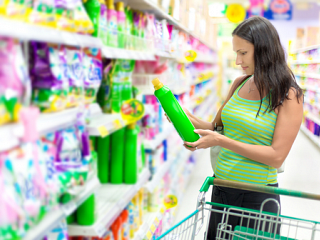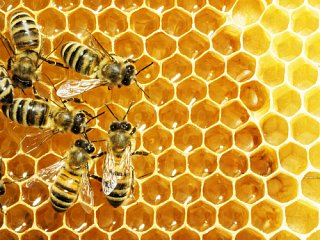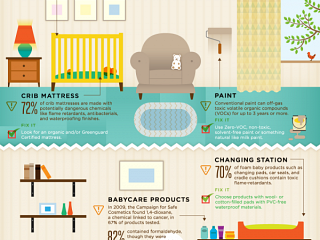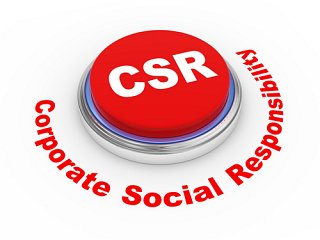In June 2013, air pollution levels in Malaysia and Singapore reached record highs, closing businesses. The cause? Thousands of fires set by both plantation managers and small farmers in neighboring Indonesia to clear land to plant oil palm trees.
Read on…The most recent photos of air pollution in the City of Harbin in northeastern China were otherworldly. Visibility was so poor that traffic lights disappeared and buses got lost on their routes. The smog closed schools, shut the airport, and disrupted city transport. The Beijing smog emergency last January reminds us that this is only the beginning of the winter heating season’s abysmal air quality in many Asian cities.
Read on…World Food Day is the annual beacon illuminating the need to end world hunger and malnutrition. It reminds us that our current food system is falling short on feeding the population, while it also highlights agriculture’s destructive relationship with the environment on which it depends. We look to this year’s World Food Day with a view to silver linings and the hope emerging sustainability initiatives bring to the future.
Read on…Seventh Generation, the Vermont-based household goods company known for its pioneering work on ingredient disclosure, has found success linking bonuses to sustainability goals. The bonus tie-in increased employee awareness of the company’s priorities and ownership of the four sustainability goals selected — helping the company meet all of these goals in 2012, as detailed in the company’s 2012 Corporate Consciousness Report.
Read on…Just one year ago, Walmart launched a novel tool that is proving to quickly and effectively align their massive supply chain on sustainability priorities — the Sustainability Index. Dairy suppliers were among the first to be brought into the Index through answering a category-specific survey about their performance in sustainability.
Read on…There’s a revolution underway. When the store where you buy cereal plans a major initiative to work with grain growers to reduce fertilizer impacts, you can feel the ground shift beneath your feet. When buyers routinely move their conversations with suppliers from price and shelf space to product recyclability, we’re definitely in a new millennium.
Read on…There was a palpable energy on the floor of the New York Stock Exchange among the business leaders, NGO representatives, investors, consultants, and media in attendance at the launch event for CDP’s 2013 S&P500 Climate Change Report. As one of CDP’s U.S. consulting partners, Pure Strategies attended this exciting launch event.
Read on…Last week found all of us from Pure Strategies bent over radishes, tomato plants, and kale as we weeded, picked and trimmed our way down harvest-ready rows.
Read on…“We must feed 9 billion people by 2050” is a common refrain among food industry leaders, held up as the ultimate — if elusive — goal of production and sustainability. Unfortunately, current approaches to address this challenge are unsustainable — from economic, ecological and social perspectives.
Read on…Consumers want to know if the products they use contain harmful chemicals. Does this mean companies should label products “free-of” certain chemicals to help consumers? Maybe, but with the US Federal Trade Commission cracking down on misleading chemical claims, this should be done carefully.
Read on…Have you been dreading what you might find in the new G4 sustainability reporting guidelines? Smaller and mid-sized companies, take heart. There is (mostly) good news. There are also some tasks you should begin right now.
Read on…Devastating losses of the lowly honeybee hold lessons for business sustainability strategies and systems-based analyses.
Read on…We spend 90% of our time indoors where air pollution is two to five times greater than outdoors. There aren’t any cars driving through the house to pollute the air, so where does the pollution come from? It is probably not surprising that tobacco smoke and mold pollute indoor air, but common household products are another key contributor. The good news is that manufacturers can protect public health and demonstrate their leadership by reducing the contribution their products make in polluting indoor air.
Read on…A new report found that companies using business model innovation were more than twice as likely to find that their sustainability initiatives add business value. That is a tremendous argument for investing the time, energy, and creativity in developing new and custom approaches to address difficult challenges.
Read on…Water-related power outages in India; over 900 vessels stranded on the Xijiang River in Guangxi, China; industrial projects halted in at least seven U.S. states; closures of the Yangtze due to water shortages — despite carrying 60 percent of the goods transported by river in China…
Read on…For most sustainability managers, there comes a time when your program starts to take shape. There is a future direction; there are goals – even some achievements. You’ve moved beyond baby steps with light bulbs and recycled office paper. You’re tackling the big stuff. You’re proud of the program you and your team have created. It may not be perfect but your aim is true and you are making progress.
Read on…There are many questions that go into understanding “green” eggs and ham, as the Dr. Seuss-inspired poem above suggests. Asking questions about environmental, social, and economic impact is a typical starting point for advancing product sustainability. For animal-based food products, sustainability also needs to address the animal’s care. The top animal welfare issues companies are tackling concern cages for egg-laying hens and gestation crates for sows. But does addressing these animal welfare issues make for green eggs and ham?
Read on…As part of a wave of states across the country that are demonstrating leadership in addressing toxins in consumer products, the State of Maine’s Board of Environmental Protection voted last month to expand existing legislation to ban the chemical Bisphenol A (BPA) in baby food packaging. BPA, a component of an epoxy resin in the seal on baby food container lids, leaches into the stored food. It poses a concern because of the hormone mimicking and disruption effects that the chemical has on the human body. Young children are the most susceptible because their bodies are still developing; a recent study suggests a link between BPA levels and childhood obesity.
Read on…


